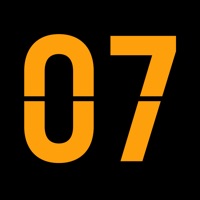
Well, I first see how long this one lasts. Patience (lots of it!) is key in this step. I think the best approach is to drill a slightly smaller hole and then use a file to correct any error. This made a better fit, but I then spoiled it a bit by going a bit off center while drilling. The Ali Express gear was 4.2 mm which I grew to about 4.4 mm by the hammer treatment (I did not dare to go much further to not deform it too much). This time though I first increased the width of the gear by the 'hit it with a hammer' method as described in this post. To fix it I used one of the Ali Express gears again. Exactly what the previous owner mentioned and I measured myself The skipping of the teeth also explained the ticking sound it produced while running. This made it effectively an 11 teeth gear instead of 12. The pinion had lost two adjacent teeth, which allowed it to skip a step. It had the same root cause (a broken gear), but a different failure mode. When I bought it I could not yet think up what what caused it, but once I opened the motor it became immediately clear. Today I bought another 431, this time running too slow, about 5 seconds per minute. As you can see in the pictures there is not much room for error as there is little left of the gear. When that was done it was still a bit too tight, so I used a file and the drill again to make widen it until it fitted tightly on the bushing. The advantage of this is that you feel what is going on, correct the direction and can stop/let go if the drill takes a too deep bite in the plastic (the gear is tiny so the drill is comparatively huge). I tried several way of keeping hold of the gear while drilling, but in the end felt the safest one was to just hold it in my fingers while using a power drill at a low speed. So I needed to drill a 2.5 mm hole in it. Then the hard bit: the gear has an inner diameter of 1.2 mm while it needs to be mounted need on the metal bushing of 2.5 mm diameter. I first scraped away the remains of the old gear. The outer diameter is a little less than it should be, but the closest I could find. It has 12 teeth, outer diameter 4.2 mm and inner 1.2 mm. We re-use our regular counter from the first example and add an animation function.After a long search found a more or less matching gear on Ali Express (some part of a model quadcopter): One the more often used animation is a "Ease Out" function where the speed of the animation is slowing down towards the end of the animation. You can use on of the predefined functions or create your own either via keyframe animations or by function composition using various compunding functions. All counters have a default animation function which is "linear". Up to now the counters progressed linearly in time. to ease in or easy out the speed of which the counter is progressing. Additional the value can be a time-based value, such as a second, minute or hour and can be displayed as a time code.Īdditionally, a animation function can be supplied if you want the animation progress non-linear, e.g. Start and end values can be constant or dynamic and the final value can be formatted as number or a floating point value. Usually you use these StringVariables to get text data from the parameters in the render request ("map") or use a fixed value ("constant").Ĭounter variables are a special type of String Variables that compute their "String" value from a given start and end value, animated over time (type "counter"). When you display text in a Dynamic Movie, the text value is supplied by a StringVariable. You can create counters that display the numbers as text, or use a bunch of images or short videos to create an animated clock, such as a "Flip Clock". With ImpossbleFX you can create dynamic counters and numbers that get their start and/or end value supplied with the render request.

The start and end values are not known ahead of time. While it easy to create those in After Effects when the value and animation parameters are known, it becomes more difficult when you need these elements in a personalized video.


Often you see a growing visual (like a rectangle in a bar chart, or a line in a line chart) alongside with the value being animated.

Some videos show a clock progessing in time, a countdown timer counting to a number, or other visual elements that animate their numerical text.


 0 kommentar(er)
0 kommentar(er)
